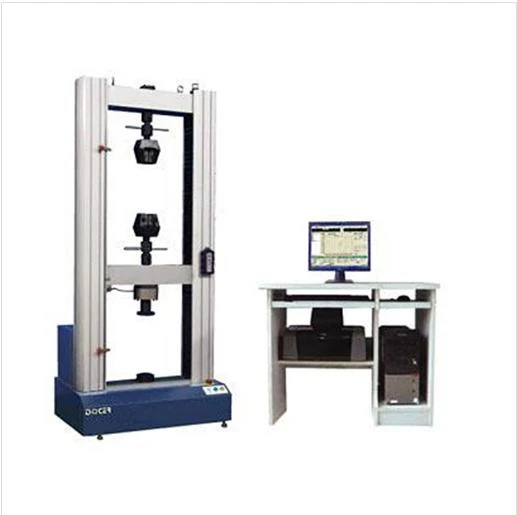Testing Machine for Semi-Conductive Shielding Resistance Measurements in Electrical Applications
Exploring the Importance of Semi-Conductive Shielding Resistance Test Machines in Modern Technology
In the rapidly advancing world of electronics and telecommunications, ensuring the reliability and safety of devices is paramount. One critical aspect of this is the testing of semi-conductive shielding materials, which play an essential role in protecting sensitive electronic components from electromagnetic interference (EMI). To evaluate the effectiveness of these materials, engineers utilize semi-conductive shielding resistance test machines. This article delves into the importance of these machines, their working principles, and their applications.
Understanding Semi-Conductive Shielding
Semi-conductive shielding refers to materials that possess conductive properties yet are not entirely metallic. These materials help to absorb and dissipate electromagnetic waves, thereby providing a protective barrier around electronic devices. Commonly used in various industries, including telecommunications, aerospace, and automotive sectors, semi-conductive materials are vital for maintaining the integrity of sensitive equipment.
The Role of Shielding Resistance Testing
Shielding resistance testing is crucial because it quantifies how effectively a material can protect against electromagnetic interference. The resistance level of a semi-conductive shielding material significantly influences its performance. If the resistance is too high, the material may not adequately shield the device, while excessively low resistance could lead to potential failures. Thus, engineers need a reliable method to measure the resistance of these materials accurately.
Mechanics of Shielding Resistance Test Machines
Semi-conductive shielding resistance test machines are designed to measure the electrical resistance of shielding materials under controlled conditions. These machines typically consist of several components, including an adjustable voltage source, a measurement unit, and a test fixture that holds the sample material.
The testing process begins by applying a known voltage across the semi-conductive material. The machine then measures the resultant current flow through the material. Using Ohm's Law (Voltage = Current × Resistance), the machine calculates the resistance value. By varying the voltage and analyzing the current response, comprehensive data on the shielding performance can be obtained.
semi-conductive shielding resistance test machine

Key Features and Benefits
Modern semi-conductive shielding resistance test machines boast several features that enhance their usability and accuracy. Many machines have digital interfaces for easy data visualization, allowing engineers to track resistance changes over time. Additionally, advanced models come equipped with automated testing capabilities and can handle multiple samples simultaneously, significantly increasing throughput in a laboratory setting.
Among the primary benefits of using these test machines is the ability to ensure compliance with industry standards. Regulatory bodies often require specific resistance thresholds; thus, testing becomes vital for certification processes. Moreover, regular testing helps in monitoring material degradation over time, essential for preventive maintenance and long-term reliability assessments.
Applications Across Industries
The application of semi-conductive shielding resistance test machines extends across various sectors. In the telecommunications industry, for example, they are used to ensure the integrity of cables and connectors that transmit data, reducing the risk of signal loss or corruption. The aerospace sector relies on these tests for the protection of avionic systems from external interferences during flight.
In the automotive industry, where electronic components are increasingly prevalent, shielding resistance testing guarantees that vehicles are resistant to EMI, enhancing safety features and overall functionality. As electric and hybrid vehicles become more common, the demand for effective shielding solutions is expected to rise, further emphasizing the importance of reliable testing methods.
Conclusion
In conclusion, semi-conductive shielding resistance test machines are an essential tool in the advancement of modern electronics. As industries continue to evolve and embrace more complex technologies, the need for rigorous testing of materials will only grow. By investing in high-quality test machines, manufacturers can ensure that their products meet the highest standards of performance and safety, ultimately contributing to a more reliable technological landscape.
-
Why the Conductor Resistance Constant Temperature Measurement Machine Redefines Precision
NewsJun.20,2025
-
Reliable Testing Starts Here: Why the High Insulation Resistance Measuring Instrument Is a Must-Have
NewsJun.20,2025
-
Flexible Cable Flexing Test Equipment: The Precision Standard for Cable Durability and Performance Testing
NewsJun.20,2025
-
Digital Measurement Projector: Precision Visualization for Modern Manufacturing
NewsJun.20,2025
-
Computer Control Electronic Tensile Tester: Precision and Power for the Modern Metal Industry
NewsJun.20,2025
-
Cable Spark Tester: Your Ultimate Insulation Assurance for Wire and Cable Testing
NewsJun.20,2025
 Copyright © 2025 Hebei Fangyuan Instrument & Equipment Co.,Ltd. All Rights Reserved. Sitemap | Privacy Policy
Copyright © 2025 Hebei Fangyuan Instrument & Equipment Co.,Ltd. All Rights Reserved. Sitemap | Privacy Policy
